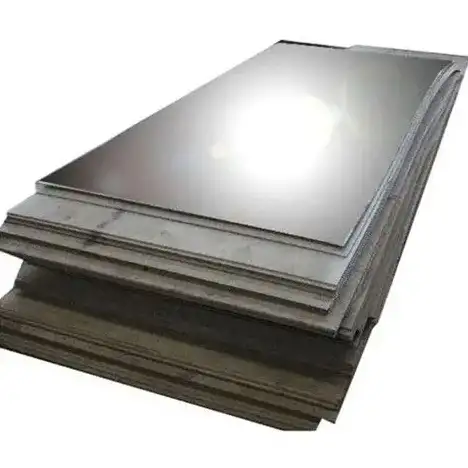2205 duplex stainless steel outperforms 316 in nearly every key metric—offering superior strength, enhanced corrosion resistance (particularly against chloride and stress‐corrosion cracking), and excellent fatigue performance—while remaining cost-effective for many demanding applications.
1. Introduction
As metal experts at Luokaiwei, we have evaluated both alloys side by side. 2205 duplex stainless steel delivers roughly twice the yield strength of 316, superior resistance to chloride‐induced corrosion, and comparable weldability—making it the go-to choice for chemical processing, offshore, and desalination equipment. Meanwhile, 316 retains an edge in cost and a proven track record in food, pharmaceutical, and low-stress marine applications.
2. Metallurgical Foundations: Structure and Phase Balance
2205 is a duplex alloy with approximately equal ferritic (α) and austenitic (γ) phases. This duplex microstructure combines the toughness of austenite with the high strength and chloride resistance of ferrite. In contrast, 316 is fully austenitic, stabilized by nickel and nitrogen to deliver ductility and formability. The duplex balance in 2205 suppresses grain growth during heat input and improves thermal stability.
3. Chemical Composition Comparison
| Element | 2205 (%) | 316 (%) |
|---|---|---|
| Chromium (Cr) | 22.0 – 23.0 | 16.0 – 18.0 |
| Nickel (Ni) | 4.5 – 6.5 | 10.0 – 14.0 |
| Molybdenum (Mo) | 3.0 – 3.5 | 2.0 – 2.5 |
| Nitrogen (N) | 0.14 – 0.20 | 0.10 (max) |
| Iron (Fe) | Balance | Balance |
| Manganese (Mn) | 1.2 – 2.0 | 2.0 (max) |
| Carbon (C) | 0.03 (max) | 0.08 (max) |
| Key Benefit | Elevated Cr/Mo for pitting | Higher Ni for ductility |

4. Mechanical Properties and Strength Profile
| Property | 2205 | 316 |
|---|---|---|
| Yield Strength | ≥ 450 MPa | ≥ 205 MPa |
| Tensile Strength | 620–850 MPa | 515–690 MPa |
| Elongation (A5) | ≥ 25 % | ≥ 40 % |
| Hardness (HB) | 230–290 | 170–220 |
The duplex grade roughly doubles yield strength, reducing section thickness and weight for the same load capacity.
5. Corrosion Resistance: General and Localized
-
General Corrosion: Both grades excel in mildly oxidizing environments.
-
Pitting & Crevice: 2205’s higher Cr and Mo raise its Pitting Resistance Equivalent Number (PREN) to ~35, compared to ~25 for 316, significantly boosting resistance in chloride‐rich media.
-
Crevice Corrosion: Duplex microstructure hinders localized attack propagation.
6. Stress‐Corrosion Cracking and Chloride Pitting
316 can succumb to chloride stress‐corrosion cracking (SCC) around 50 °C in ~ 500 ppm Cl⁻, whereas 2205 resists SCC up to 100 °C in > 10 000 ppm Cl⁻. For seawater and brackish service, 2205 is far more robust.
7. Weldability and Fabrication Considerations
We find that both alloys weld readily by TIG, MIG, and SMAW. However, 2205 demands controlled heat input and potential post‐weld annealing to restore phase balance. 316 is more forgiving but requires stabilization for high‐temperature applications to prevent intergranular corrosion.
8. Thermal and Cryogenic Performance
-
High‐Temperature Strength: 2205 retains higher creep strength up to ~ 300 °C.
-
Cryogenic Toughness: Both maintain good toughness down to – 196 °C, but duplex alloys can exhibit embrittlement if improperly heat treated.
9. Fatigue and Fracture Toughness
2205’s duplex structure provides superior fatigue resistance under cyclic loads—critical for pump shafts, pressure vessels, and rotating equipment. Fracture toughness of both ranks similarly at room temperature, but 316’s higher ductility makes it marginally more forgiving in crack‐arrest scenarios.
10. Cost Analysis and Total Lifecycle Economics
| Metric | 2205 | 316 |
|---|---|---|
| Raw‐Material Cost | + 20–30 % | Baseline |
| Fabrication Cost | + 10–15 % | Baseline |
| Service Life | + 2× in chloride service | Baseline |
| Total Lifecycle Cost | – 15–25 % over 20 yrs | Baseline |
Despite higher upfront cost, 2205’s extended service life and thinner sections typically yield lower total cost of ownership.
11. Global Price Comparison
| Region | 2205 SS (USD/kg) | 316 SS (USD/kg) |
|---|---|---|
| China (Luokaiwei) | 6.50 | 5.00 |
| USA | 9.00 | 7.00 |
| Europe | 8.50 | 6.80 |
| India | 6.80 | 5.30 |
(Prices indicative as of Q3 2025; subject to market fluctuations.)
12. Typical Applications and Industry Use Cases
-
2205 DSS: Offshore platforms, chemical reactors, desalination plants, pulp & paper digesters, pressure vessels.
-
316 SS: Food processing equipment, pharmaceutical reactors, medical devices, architectural cladding, marine hardware.
13. Availability, Lead Times, and Custom Services
At Luokaiwei, our vast stock of 2205 and 316 coils, plates, and bars, plus in-house slitting and machining, ensures:
-
100 % factory‐direct pricing
-
Full customization: cut-to-length, special tolerances, surface finishes
-
Rapid dispatch: standard stock parts ship within 5 business days
14. Luokaiwei’s Value Proposition
As a leading Chinese supplier and manufacturer, Luokaiwei offers:
-
Competitive edge: zero distributor mark-up, direct factory costs
-
Comprehensive service: from material selection to final inspection
-
Quality assurance: ISO 9001, SGS‐certified, full traceability
15. Frequently Asked Questions
-
When should I choose 2205 over 316?
If your application involves high‐chloride environments, elevated temperatures, or cyclic loading, 2205 delivers superior performance and longer service life. -
Can I weld 2205 like 316 SS?
Yes, but strict control of interpass temperature (≤ 150 °C) and heat input is required; post-weld solution annealing is often recommended. -
How does nitrogen content affect duplex stainless steel?
Added nitrogen raises yield strength, aids austenite formation, and enhances pitting resistance (PREN). -
Are there magnetic concerns with 2205?
Duplex exhibits slight magnetic response due to its ferritic phase; 316 is fully non-magnetic but may become slightly magnetic after cold work. -
What surface finishes are available?
We offer 2B, BA, No.4, mirror polish, and bead blasted finishes on both 2205 and 316 to suit hygienic, decorative, or industrial needs.











